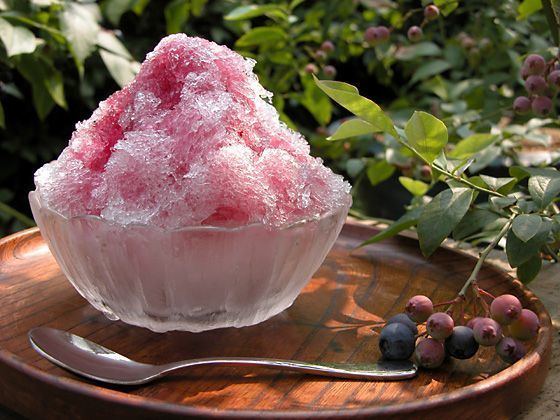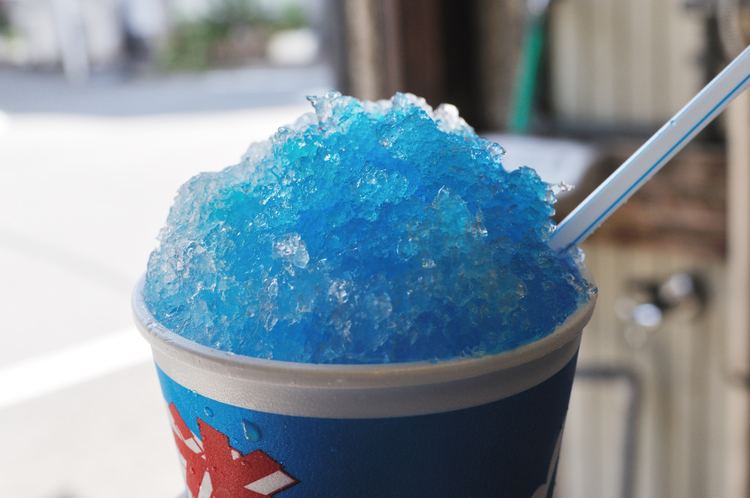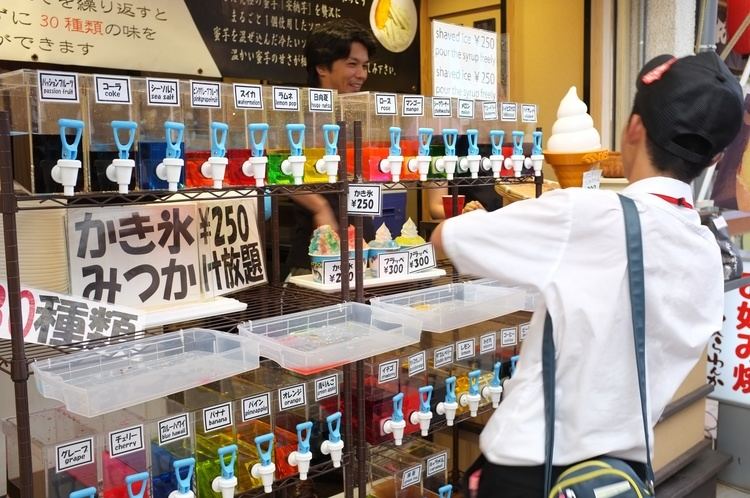Type Shaved ice Variations Shirokuma | ||
 | ||
Similar Wagashi, Matcha, Patbingsu, Cotton candy, Takoyaki | ||
Kakig ri shaved ice oedo onsen monogatari tokyo
Kakigōri (かき氷) is a Japanese shaved ice dessert flavored with syrup and a sweetener, often condensed milk.
Contents
- Kakig ri shaved ice oedo onsen monogatari tokyo
- Ice shaver shaving machine hawaiian shaved ice raspado halo halo kakig ri snow cone
- Shirokuma
- Description
- Etymology
- Availability
- References
Popular flavors include strawberry, cherry, lemon, green tea, grape, melon, "Blue Hawaii," sweet plum, and colorless syrup. Some shops provide colorful varieties by using two or more different syrups. To sweeten kakigōri, condensed or evaporated milk is often poured on top of it. It is similar to a snow cone, but with some notable differences: it has a much smoother fluffier ice consistency, much like fresh fallen snow, and a spoon is almost always used to eat it. The traditional way of making kakigōri uses a hand cranked machine to spin a block of ice over an ice shaving blade. Even though electric ice shavers are most often used, street vendors can still be seen hand-shaving ice blocks in the summer.

In addition to the streets, kakigōri is sold in festivals, convenience stores, coffee shops, and restaurants. During the hot summer months, kakigōri is sold virtually everywhere in Japan. Some shops serve it with ice cream and sweetened red beans or tapioca pearls.
Ice shaver shaving machine hawaiian shaved ice raspado halo halo kakig ri snow cone
Shirokuma

Shirokuma (白熊 or しろくま) is a type of kakigōri, a Japanese dessert made from shaved ice flavored with condensed milk, small colorful mochi, fruits, and sweet bean paste (usually Azuki bean).
Description

Shirokuma has been popular in Kagoshima since the middle of the Edo period and is well-known to many Japanese. Condensed milk, fruits, and sweet bean paste are served over shaved ice. It is eaten in cafés, but also in some department stores, such as Yamakataya (山形屋) or Mujaki.
Etymology

Shirokuma literally means "white bear", and indicates "polar bear" in Japanese. There are some views about the origin of the name.

In one account, there was a cotton shop in Kagoshima city. The shop started to sell kakigōri as its side-business. The kakigōri was flavored with condensed milk. When the owner was thinking of a name for the kakigōri, he noticed the picture of a polar bear was printed on the labels of the condensed milk's can.
Another account is that Mujaki, a coffee shop in Kagoshima City, started to sell the kakigōri, put milk-syrup, sanshoku-kanten (colorful agar), yōkan (soft azuki-bean jelly), sweet-beans and fruits in a pattern that resembled a polar bear when seen from overhead, so it was named Shirokuma.
Yet others say that it was created in honour of the memory of Saigo Takamori after his battle with the Edo Shogun.
Availability
Supermarkets in southern Kyushu, especially in Kagoshima City, Kagoshima, and mom-and-pop candy stores sell shirokuma as a popular product. It is sold in different types. Shirokuma are often eaten at Kagoshima Fairs which are held in other prefectures. Shirokuma in cups are sold at convenience stores all over Japan.
